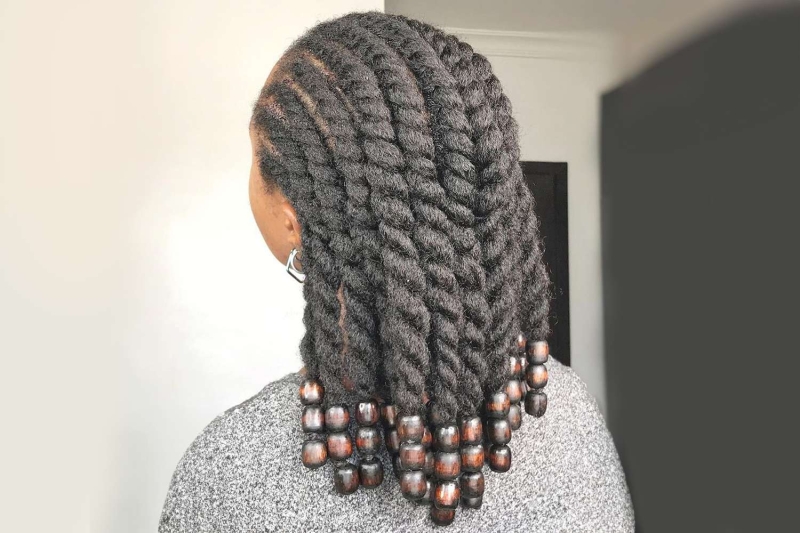Contents
If you’re searching for a quick and easy low-maintenance protective hairstyle, look no further than flat twists. “They involve twisting sections of hair flat against the scalp, providing a protective style similar to cornrows but instead using a two-strand twisting technique,” says celebrity hairstylist Camille Friend. And because the look involves two strands instead of three, it’s much easier to master than cornrows.
Meet the expert
- Mitchell Cantrell is a hairstylist and educator based in Los Angeles. Yvey Valcin is a master hairstylist and founder of Yvey Salon. Camille Friend, a celebrity hairstylist and founder of Hair Scholars. Marquita Lynch is a celebrity hairstylist to stars like Tia Mowry.
To make sure you do flat twists the correct way, here’s everything to know.
What Are Flat Twists?
“Flat twists are kinda like cornrows, but instead of braiding, you're twisting the hair close to the scalp,” says hairstylist Mitchell Cantrell. “It's a real cute protective style that can be rocked on its own or used as a base for other styles.”
One thing about this hairstyle is its versatility and ability to keep your hair healthy. “Flat twists are not too detailed,” says hairstylist Yvey Valcin, “and they're pretty easy to create, you just need to know how much texture you want.” For example, a looser twist with less product will create a more textured, carefree finish while a tight twist with gel will create a longer-lasting, more polished look.
Flat twists are a great protective style to try when your hair needs a break from manipulation. “Less daily handling helps reduce the risk of breakage and split ends," says Lynch. Cantrell adds: "Flat twists help retain moisture, which keeps your hair healthy and prevents breakage."
Plus, flat twists introduce a layer of versatility into your routine. "You can wear 'em for a while and then take 'em out for a bomb twist-out style," says Cantrell.
Flat Twists vs. Cornrows
So, the 411 is that flat twists are easier and quicker to do than cornrows. “Done with two strands, as opposed to three for cornrows, flat twists require less tension and precision for a complete look,” says celebrity hairstylist Marquita Lynch. Zooming in on that bit about tension—this makes flat twists a gentler style than cornrows for people with sensitive scalps and/or fine hair. Regardless of how sensitive your scalp is, anyone can benefit from the low-tension look, as less tension promotes overall hair health, Friend explains.
How to Do Flat Twists
1. Wash Your Hair
Every expert suggests starting with clean, detangled hair. Valcin says to towel dry your hair and leave it slightly damp for best results. Then, Lynch suggests applying a leave-in conditioner spray or cream to maintain moisture.
2. Part the Hair
Use the length of a rat-tail comb to part your hair into even sections. Keep the sections separated by clipping them in place. However, if you plan to take out your flat twists and wear the curls they leave behind, Cantrell says to part your hair with your fingers for diffused parts that are less visible in your twist out.
3. Twist Sections of Hair
Start by taking a section of hair at the beginning of the part. Divide this section into two equal strands and twist them around each other once. After the twist, add a small section of hair from the scalp to each strand before twisting again. Continue twisting and adding small sections of hair to each strand as you move along the part. Keep the twist close to the scalp and maintain even tension for uniform results. Once you reach the bottom of the part, continue with a regular two-strand twist until you reach the end of your hair.
4. Secure the Ends
For extra hold, you can secure the ends with a small amount of edge control gel and twist around your finger or use a hair tie if needed. Repeat throughout your entire head, following the desired parting pattern.
Maintenance
To keep your twists looking their best, apply hair oil to the scalp and hair to retain moisture. Before going to sleep, Lynch recommends covering flat twists with a satin or silk scarf at night to “maintain the style and reduce frizz.”
